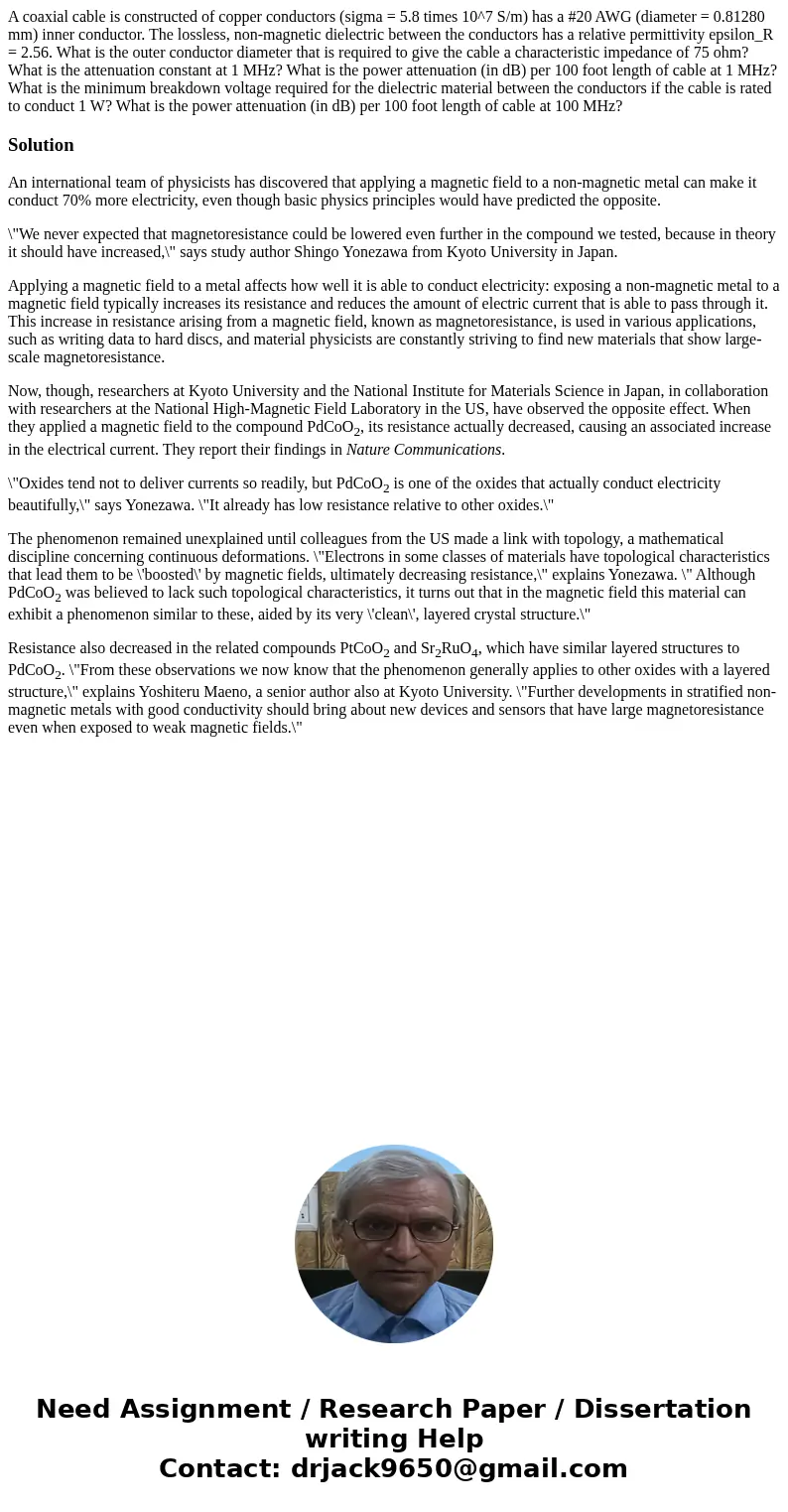A coaxial cable is constructed of copper conductors sigma 5
Solution
An international team of physicists has discovered that applying a magnetic field to a non-magnetic metal can make it conduct 70% more electricity, even though basic physics principles would have predicted the opposite.
\"We never expected that magnetoresistance could be lowered even further in the compound we tested, because in theory it should have increased,\" says study author Shingo Yonezawa from Kyoto University in Japan.
Applying a magnetic field to a metal affects how well it is able to conduct electricity: exposing a non-magnetic metal to a magnetic field typically increases its resistance and reduces the amount of electric current that is able to pass through it. This increase in resistance arising from a magnetic field, known as magnetoresistance, is used in various applications, such as writing data to hard discs, and material physicists are constantly striving to find new materials that show large-scale magnetoresistance.
Now, though, researchers at Kyoto University and the National Institute for Materials Science in Japan, in collaboration with researchers at the National High-Magnetic Field Laboratory in the US, have observed the opposite effect. When they applied a magnetic field to the compound PdCoO2, its resistance actually decreased, causing an associated increase in the electrical current. They report their findings in Nature Communications.
\"Oxides tend not to deliver currents so readily, but PdCoO2 is one of the oxides that actually conduct electricity beautifully,\" says Yonezawa. \"It already has low resistance relative to other oxides.\"
The phenomenon remained unexplained until colleagues from the US made a link with topology, a mathematical discipline concerning continuous deformations. \"Electrons in some classes of materials have topological characteristics that lead them to be \'boosted\' by magnetic fields, ultimately decreasing resistance,\" explains Yonezawa. \" Although PdCoO2 was believed to lack such topological characteristics, it turns out that in the magnetic field this material can exhibit a phenomenon similar to these, aided by its very \'clean\', layered crystal structure.\"
Resistance also decreased in the related compounds PtCoO2 and Sr2RuO4, which have similar layered structures to PdCoO2. \"From these observations we now know that the phenomenon generally applies to other oxides with a layered structure,\" explains Yoshiteru Maeno, a senior author also at Kyoto University. \"Further developments in stratified non-magnetic metals with good conductivity should bring about new devices and sensors that have large magnetoresistance even when exposed to weak magnetic fields.\"

 Homework Sourse
Homework Sourse